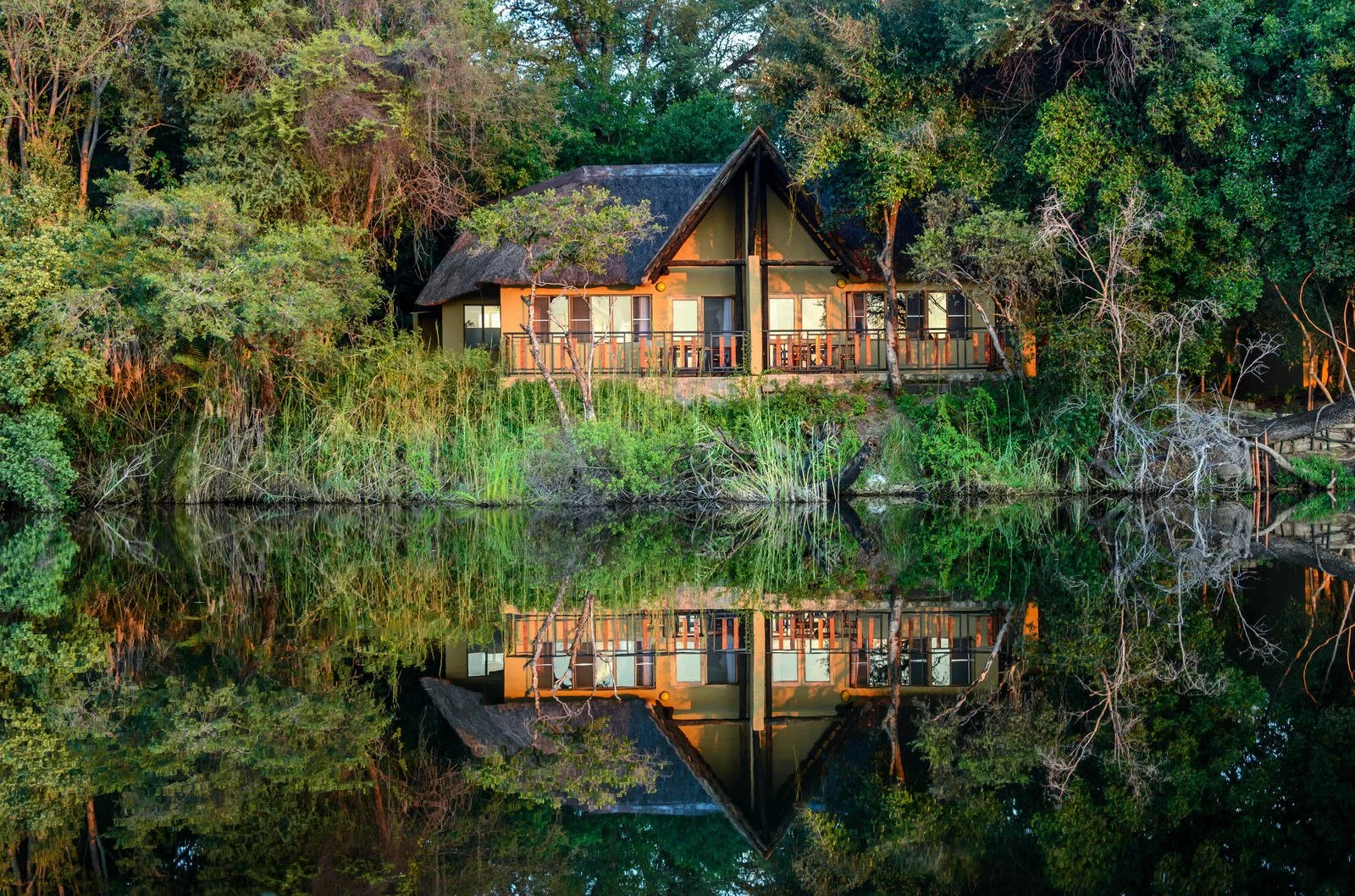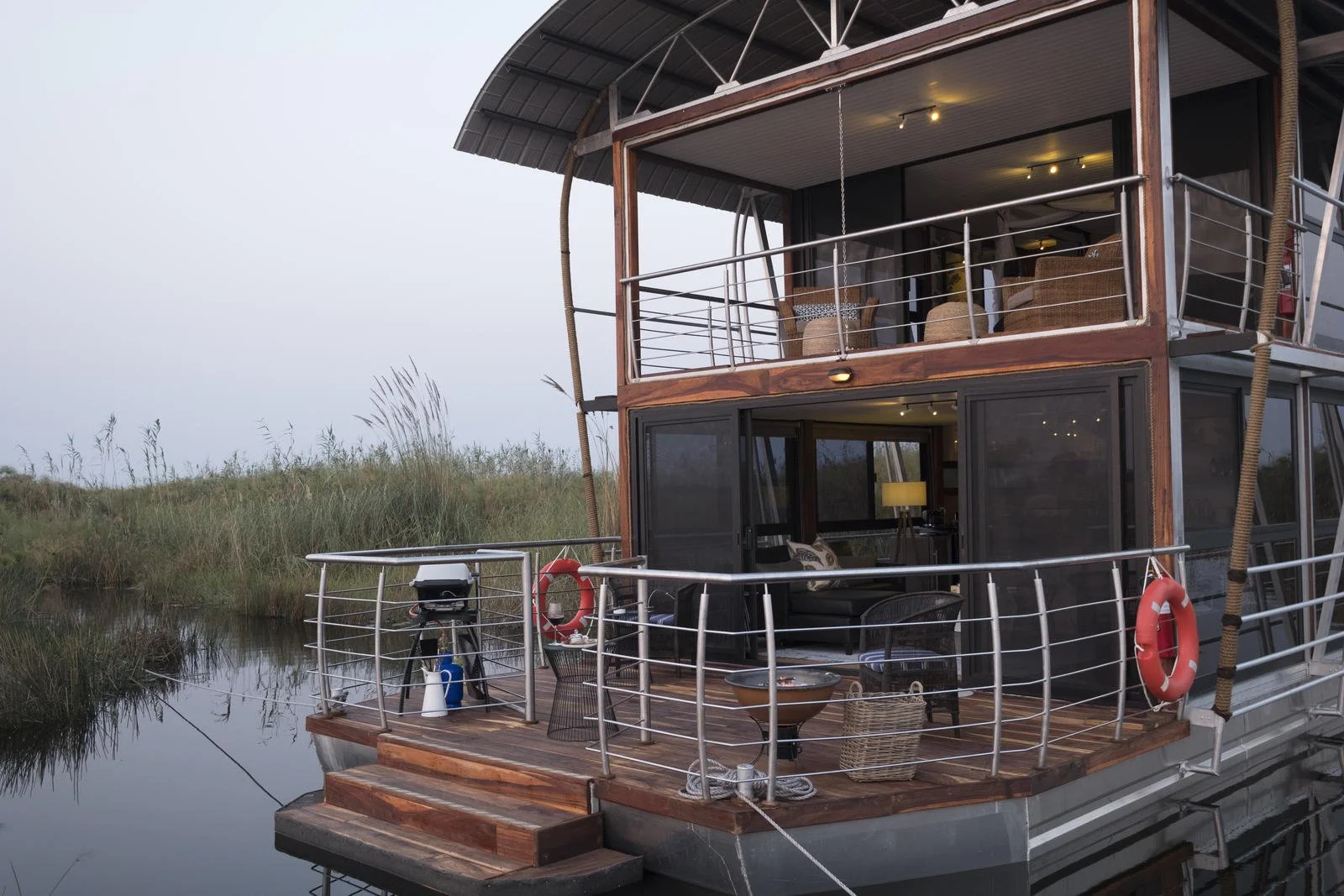A Complete Guide to the National Parks in the Zambezi Region, Namibia
Written by Nina van Zyl
Namibia’s Zambezi Region is the complete opposite of what you’d expect of this seemingly “desert” country. Sticking out from the rest of the country like a sore thumb, it receives the highest rainfall and is surrounded by rivers that flow throughout the year - in contrast to rivers elsewhere in Namibia known more for their sandbeds than actually carrying any water. The Zambezi is a paradise of birds, animals and even fish, making it a great destination for birders, anglers, and anyone else. Before you go, have a look at our complete guide to the national parks in the Zambezi Region, and then get going.
Kavango–Zambezi Transfrontier Conservation Area (KAZA)
5 African countries came together to protect and conserve one exceptional area: the Zambezi. And that resulted in KAZA, a Transfrontier Conservation Area that stretches between Namibia, Angola, Botswana, Zimbabwe and Zambia. KAZA is made up of 36 conservancies, game and forest reserves and national parks. It encompasses an area about the size of Sweden (520.000 km2), and it allows the free movement of animals on their ancient migratory routes - which is always a good thing. Woodlands, floodplains, grasslands and forests; the diversity of environments is what makes the area so unique- and it’s all protected. It is a biodiversity hotspot, with 50% of the world’s elephant population and over 800 bird species calling it home. Visitors can keep busy with game drives, bird watching and even fishing. And what’s excellent about KAZA is that it allows visitors to see the best of the area, from one country to the next. All the parks on the following list are part of KAZA in Namibia.
1. Nkasa Rupara National Park
Nkasa Rupara National Park is the largest wetland area in Namibia with conservation status. That means 320 km2 of unspoilt waterways, lakes, islands and channels. Essentially, the park is centred around two islands in the Kwando River, Nkasa and Rupara (from which the park gets its name). During the rainy season, the park is mostly flooded, so it is only really during the dry season that adventurers can traverse it. With such lush surroundings, the park is also home to many special and rare bird species, making it a must-visit for enthusiastic birders.
How to get there
On the C49, both from the west or east, starting either at Kongola and heading south then southeast, or from Katima Mulilo and heading southwest. The park is located right in the lower left-hand corner of the Zambezi Region.
Best time to go
With all the surface water, the park is completely inaccessible during the rainy season, so you can only visit between May and August.
2. Bwabwata National Park
Located on the stem of the Zambezi Region and wedged between the Okavango and Kwando Rivers, Bwabwata National Park is a lush sanctuary of about 6.300 km2. With woodlands, wetlands and Kalahari sands, the park is home to 35 large game species, a myriad of small-game species and over 400 bird species. There’s no surface water in the park, which means that most animals congregate along the rivers and waterways, making them easy to spot.
How to get there
Inland from Rundu, take the B8 heading west. From Katima Mulilo, take the B8 heading east.
Best time to go
The best time to visit is in the dry season. That means the winter months between May and September when rainfall is at its lowest and the vegetation is less dense, making it easier to see animals.
3. Mudumu National Park
East of Bwabwata lies Mudumu National Park, a 737 km2 park centred on the Mudumu Mulapo fossil river course and bordered on its western side by the Kwando River. This park comprises mopane woodlands and dense savannahs and is a haven for a diverse range of animal species. Think sitatunga, red lechwe, crocodiles and hippos; spotted-necked otters and elephants; buffalo, roan antelope, kudu and impala. There are also a few extraordinary species of bird that make their appearance in the park, like the rare Wattled Crane and Lesser Jacana.
How to get there
The park doesn’t have a formal gate. Simply follow the C49 west of the park from Kongola or east of the park from Katima Mulilo.
Best time to go
The best time to visit is when the rainfall is low and the temperatures mild. That means during the winter, or the dry season, which stretches from March to September.
Accommodation
Basic
Chobe River Camp Campsite
Near the tip of the Zambezi, Chobe River Camp offers 6 campsites as an intimate refuge, with stunning views across the Chobe River. With its proximity to the border post between Namibia and Botswana, as well as its location near the Chobe National Park, this is the perfect springboard for your exploration of the area. Did we mention the refreshing pool?
Located near the western border of the Bwabwata National Park, Namushasha River Lodge Campsite is made up of shady campsites on a large grassy bank underneath magnificent grandfather trees. Cool off in the swimming pool and have a bite to eat at the Namushasha River Lodge Restaurant.
Just 40 km east of Katima Mulilo lies Zambezi Mubala Camp, pleasingly spread out under a canopy of trees on the bank of the Zambezi. The 8 safari tents all come with en-suite bathrooms and fully equipped kitchens. Guests can also visit the restaurant or spend time lounging by the pool.
Mid-level
The 10 luxury wood, steel and canvas tents seem to blend effortlessly into the surrounding wilderness at Nkasa Lupala Tented Lodge. Viewpoints link the rooms with a series of pathways and the lounge, bar and dining room. Located on the northern border of Nkasa Rupara National Park, the lodge is totally energy self-sufficient and eco-friendly.
Constructed out of canvas and indigenous Mopane timber for an environmentally conscious design, the 20 tented chalets at Chobe River Camp offer peaceful solitude near the tip of the Zambezi. With views over the nearby flood plains, the lodge is perfectly situated to make the most of the spectacular surroundings. Wildlife and birds are abundant, and you can gaze at the animals on the opposite bank in Botswana.
One of the most captivating lodges in all of Caprivi, Namushasha River Lodge’s accommodation comprises 23 thatched chalets all set under giant riverside trees and overlooking a hippo pool. When visiting, you can choose to stroll past the green-lawned campsite to the traditional heritage centre, hop aboard the riverboats for a cruise, or take a trip to Bwabwata National Park.
Fancy
Deep in Nkasa Rupara National Park lies Jackalberry Tented Camp. There are 4 tented rooms scattered around the main lodge area that offer guests privacy and the chance to indulge in the atmosphere of the Zambezi. The main area is a 3-story structure built around a magnificent Jackalberry tree and has the best views from the top.
Anchored along the Kwando River, Namushasha River Villa offers guests the opportunity to experience Bwabwata National Park in a private and intimate setting. The villa caters for 2 guests – ideal for a couple’s retreat. The houseboat has lovely views from the upstairs bedroom, furnished with a 4-poster bed. You can also partake in fishing trips and visits to the local villages.
Settled among the treetops on the eastern border of Bwabwata National Park, Nambwa Tented Lodge was designed to allow the undisturbed movement of elephants to continue below the lodge. The stylish eco-friendly rooms are connected to the main lodge by way of timber walkways through the trees. Days are spent watching the wildlife come and go from the lodge deck or on the river itself with a relaxing boat cruise.
How to include the Zambezi National Parks in your Namibia adventure
Have a look at some trips that include the Zambezi region so that you don’t miss out on visiting its national parks:
Namibian Odyssey: Deserts to Eden in 20 Days
Enjoy the highlights of Namibia, from the seas of Swakopmund to the sands of Sossusvlei, before heading inland to the rugged mountains of Spitzkoppe and Palmwag. Follow the call of the wild to the vividly contrasting dry Etosha and the green Zambezi.
Discover the Zambezi: Namibia’s Secret Eden in 14 Days
From lions to hippos, enjoy an in-depth exploration of Namibia's best-kept secret! Experience Namibia's desert-scape and lush wilderness without breaking the bank. Enjoy intimate wildlife sightings in desolate and dramatic Etosha and the wild rivers of the Zambezi Region.
Namibian Eco-Safari: Deserts to Eden in 17 Days
Begin your life-changing trip in rugged Damaraland and boulder-strewn Spitzkoppe before setting forth to desert-adapted rhino terrain in Palmwag. Seek out even more wondrous, charismatic creatures in Namibia's two wildlife refuges, the dry landscape of Etosha and the wetland wonderland of the Zambezi.
Insider Tips
Remember to take your malaria medication and use mosquito-repellant, especially at dusk and in the evenings.
Wear a long-sleeve jacket or top during excursions like boat cruises or game drives, and always wear a hat.
Pack your binoculars for some essential bird watching.
Rivers in the Zambezi are not for swimming - look out for crocodiles and hippos.
The Zambezi is a gem of a destination that you cannot miss during your experience of Namibia. Start planning your once-in-a-lifetime trip to Namibia today.










